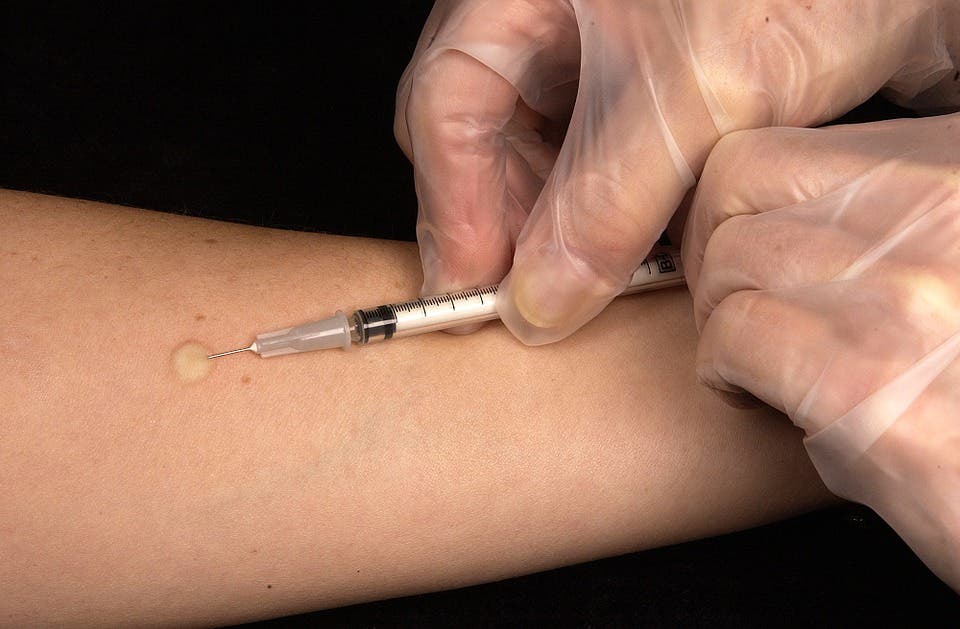Immunity against mumps might not be as good as we thought. A new study from the Emory Vaccine Center and the U.S. Centers for Disease Control and Prevention (CDC) found that immunity against mumps virus appears insufficient in a fraction of college-aged people who were vaccinated in childhood.

The study, scheduled for publication in PNAS, reports that in the last 15 years, several mumps outbreaks have occurred among college students, sports teams and in close-knit communities across the United States.
The study cites two possible contributing factors: waning vaccine-induced immunity and differences between the strain of mumps virus now circulating and the vaccine strain, which is part of the standard measles, mumps, and rubella (MMR) childhood vaccine.
Mumps is a contagious viral disease that causes swollen salivary glands, leading to the telltale symptoms of puffy cheeks and swollen jaws. Other symptoms include fever, headache, muscle aches, tiredness, and loss of appetite, and may take 12 to 25 days to appear.
The virus spreads through the saliva or mucus of an infected individual, from coughing, sneezing, food, shared utensils, or contaminated surfaces. While this might have you scrambling to Web-MD, it is important to note that one dose of MMR vaccine is 93 percent effective against measles, 78 percent effective against mumps, and 97 percent effective against rubella. The recommended two doses are 97 percent effective against measles and 88 percent effective against mumps.
“Overall, the MMR vaccine has been great, with a 99 percent reduction in measles, mumps and rubella disease and a significant reduction in associated complications since its introduction,” says Sri Edupuganti, MD, MPH, associate professor of medicine (infectious diseases) at Emory University School of Medicine and medical director of the Hope Clinic of Emory Vaccine Center. “What we’re seeing now with these mumps outbreaks is a combination of two things – a few people were not making a strong immune response to begin with, and the circulating strain has drifted away from the strain that is in the vaccine.”
The study included 71 people with ages ranging from 18 to 23 in the Atlanta, Georgia vicinity. This is the largest look of mumps memory B cells in vaccinated people. While 69 of the 71 had received two MMR doses, 80 percent of those received the second more than 10 years before enrolling in the study in 2010.
Even though the vaccine has drastically reduced mumps cases, outbreaks of the virus can still occur. Most of these are among groups of people who have prolonged close contact, such as sharing water bottles or cups, kissing, practicing sports together, or living in close quarters with a person who has mumps. And since college is a great place for, well, all of these things, it is also a great place for the spreading of mumps. However, while some vaccinated people may still get mumps if they are exposed to the virus, those symptoms are milder in them.
Of the participants in the Emory and CDC study, 93 percent had antibodies against mumps, although 10 percent had no detectable mumps-specific memory B cells, that would generally be capable of producing antiviral antibodies as part of a memory response after exposure to mumps virus. On average, the frequency of memory B cells in participants’ blood was five to 10 times lower for cells making antibodies against mumps, compared with cells making antibodies to measles or rubella.
Prior to the start of the U.S. mumps vaccination program in 1967, the country saw about 186,000 reported mumps cases every year. With the introduction of a mumps vaccine, today part of the MMR vaccine, the number of cases has fallen to fewer than 1,000 cases in recent decades.
However, the past few years have seen an uptick in recent cases (anti-vaxers anyone?). In 2016, the U.S. saw 6,366 cases with just north of 5,500 the next year. More than 2,000 were reported in 2018. As of July 19, 2019, 45 states and the District of Columbia have reported approximately 1,800 cases.









